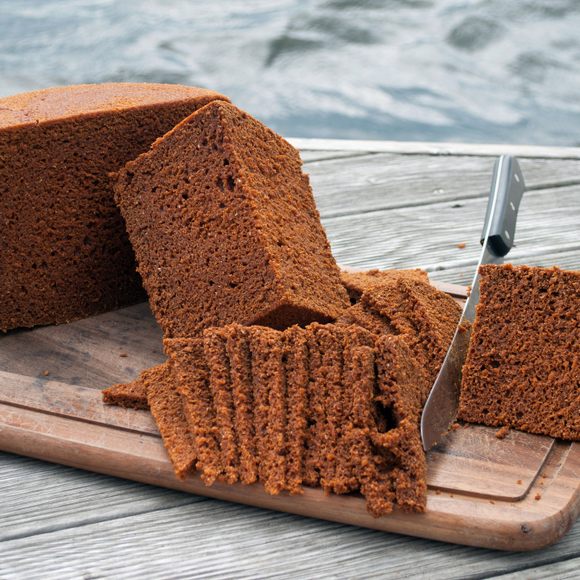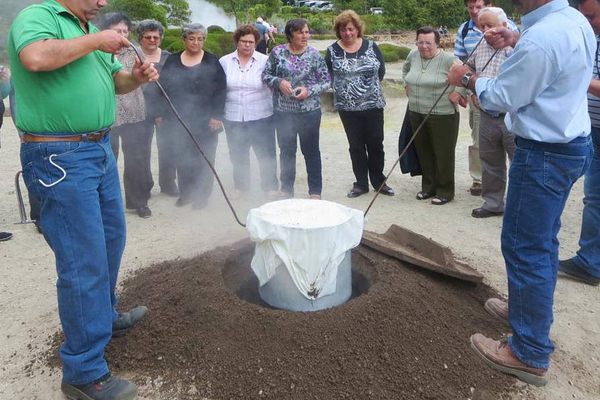Prepared Foods
Hverabrauð
Iceland's thick, chewy "hot spring bread" is just like regular rye bread, with one big difference.
Every day, bakers in Iceland trudge out to their nearest geothermal spring, dig a hole in the hot black sand, and deposit a box full of just-mixed bread dough. About a day later, they go back out, dig up the box, and pry off the lid. Inside is a perfectly rectangular loaf of rye bread, gently steamed by the heat of the spring. Pry it out, slice it up, slap some butter or pickled herring on top, and you’ve got a naturally baked snack, no oven necessary.
Iceland is comprised of a labyrinthine network of underground volcanic hot springs, and about two-thirds of the country’s energy comes from geothermal sources. The bread must absorb some of this power during the steaming process, and it pays off: The result is dense, chewy, nutty, and just a little bit sweet. After a few bites, you might feel like climbing tall mountains and fording icy rivers. Hverabrauð means, literally, “hot spring bread,” but another of the food’s nicknames—þrumari, or “Thunder Bread”—hints at another powerful side effect: All that fiber can wreak havoc at the other end of your digestive system.
Most Icelanders opt for the convenience of baking their rye bread (rúgbrauð) in modern ovens. But long ago, when people had to place hot rocks in water-filled pits to steam food, a thermal spring was amazingly convenient. A minority of Icelanders now choose their ancestors’ method, claiming that modern ovens just don’t produce anything as delicious.
Where to Try It
-
Laugarvatn Fontana
Hverabraut 1, Laugarvatn, IcelandThis restaurant and hot spring spa holds tours of its on-site geothermal bakery twice per day; a tour includes a tasting of the bread "hot from the ground with some butter."
Written By
 Cara Giaimo
Cara Giaimo
Sources
- www.ontheluce.com/2015/09/09/on-the-trail-of-thunder-bread-in-iceland/
- www.treehugger.com/green-food/how-they-bake-volcano-bread-underground-iceland.html
- adventures-aurora.blogspot.com/2012/06/hverabrau-hot-springs-bread.html
- www.bbc.com/travel/gallery/20170711-the-icelandic-bread-thats-baked-in-the-ground
- www.afar.com/magazine/what-exactly-is-volcano-bread
- books.google.com/books?id=mg4aAdxORk0C&dq
The Atlas Obscura Podcast is Back!


















